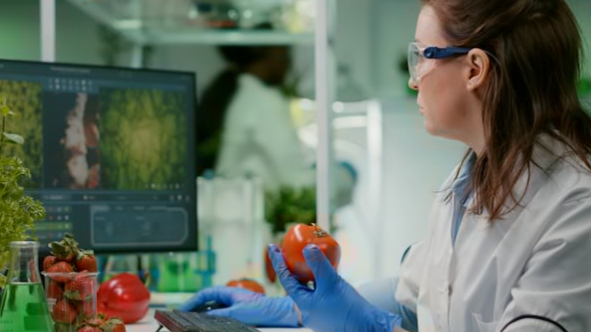 Novel foods are revolutionizing the food industry, offering exciting possibilities but also regulatory challenges. With differing approval processes worldwide, food companies face crucial decisions. From the rigorous EFSA in the EU to the swift Singapore Food Agency, each market presents unique opportunities and hurdles. Join us as we delve into how different markets regulate novel foods, exploring key insights and considerations for food innovators navigating the global landscape.
Novel foods are revolutionizing the food industry, offering exciting possibilities but also regulatory challenges. With differing approval processes worldwide, food companies face crucial decisions. From the rigorous EFSA in the EU to the swift Singapore Food Agency, each market presents unique opportunities and hurdles. Join us as we delve into how different markets regulate novel foods, exploring key insights and considerations for food innovators navigating the global landscape.
Regulatory Rigor vs. Speed of Approval
When it comes to regulating novel foods, one of the key considerations for food companies is the balance between regulatory rigor and the speed of approval. The European Food Standards Agency (EFSA) stands out for its stringent approval process, known for being one of the most complex and respected globally. Despite its credibility, the average time for a novel food application with EFSA is around 2.56 years, with only 22 assessments completed in 2023 against a target of 42. This delay in approvals has been a point of contention, with critics like FoodChainID highlighting the complexity as a barrier to market access for food companies.
On the other hand, the Singapore Food Agency (SFA) offers a contrasting approach with its swift approval times, taking an average of nine to 12 months for evaluations. Companies like Vow and Eat Just have benefited from the expeditious approval processes in Singapore, gaining access to the market relatively quickly. However, the trade-off for speed is the smaller market size in Singapore compared to the EU or the US. This dichotomy between regulatory rigor and speed underscores the strategic decisions that food companies must make when choosing where to seek approval for their novel foods.
Market Access and Population Reach
The approval process for novel foods is not just about regulatory compliance but also about market access and population reach. Seeking approval from the European Commission opens the doors to the entire EU market, comprising around 448 million people. This vast consumer base presents a significant opportunity for companies like Gourmey and Mosa Meat, which have applied for novel food approvals with EFSA. Despite the lengthy approval timelines, the sheer size of the EU market makes it an attractive prospect for companies looking to scale their novel food products.
In contrast, the Singapore Food Agency's expedited approval process comes with the caveat of a smaller population size in Singapore, with only 5.9 million people. While the quicker access to the market is advantageous, companies must weigh the trade-off between speed and market size when considering where to seek novel food approvals. Understanding the dynamics of market access and population reach is crucial for food companies navigating the global landscape of novel food regulations.
Adaptability and Innovation in Regulatory Processes
The evolution of novel food regulations highlights the importance of adaptability and innovation in regulatory processes. The UK's Food Standards Agency (FSA) has faced criticism for its rigidity and lack of adaptability, with companies expressing dissatisfaction over limited pre-application support and inflexible rules. However, initiatives like the cultivated meat regulatory sandbox demonstrate a proactive approach to fostering innovation and easing regulatory constraints for start-ups in the UK.
Similarly, the European Commission has recognized the need to streamline its approval process for novel foods, acknowledging the challenges posed by complexity and delays. By staying abreast of industry developments and exploring ways to enhance efficiency, regulatory bodies can better support food innovators in bringing novel products to market. The emphasis on adaptability and innovation underscores the importance of regulatory frameworks that can keep pace with the rapidly evolving landscape of novel foods and food innovation.
Conclusion
In the dynamic landscape of novel foods, the interplay between regulatory rigor, market access, and adaptability shapes the strategic decisions of food innovators worldwide. From the meticulous European Food Standards Agency to the expedited Singapore Food Agency, each market offers unique opportunities and challenges. As companies navigate this complex terrain, balancing speed, market size, and regulatory innovation is paramount. The future of food innovation hinges on embracing agility, fostering collaboration with regulatory bodies, and seizing opportunities for growth in diverse markets. In this era of transformative change, the ability to navigate regulatory landscapes adeptly will be the cornerstone of success for businesses driving novel food advancements globally.